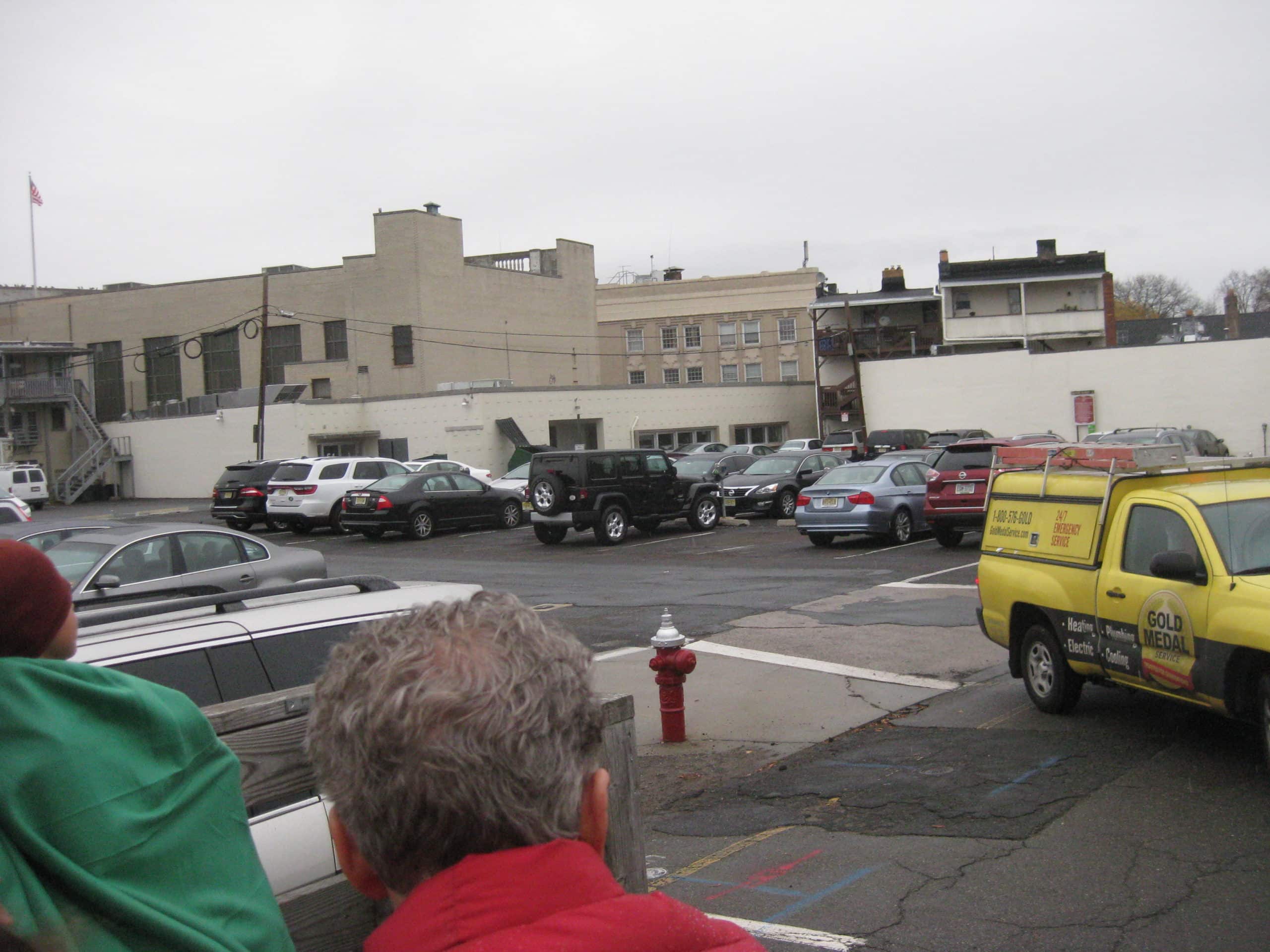
photo by Boyd Loving minutes after the alleged assault at the council meeting
BY MATTHEW SCHNEIDER
STAFF WRITER |
THE RIDGEWOOD NEWS
RIDGEWOOD – Ridgewood’s Village Council voted 3-2 to bond with the Bergen County Improvement Authority (BCIA) on Feb. 10 in order to fund the proposed Hudson Street parking garage.
This came on the heels of last week’s unanimous vote of the BCIA to authorize the submission of an application to the state local finance board, accelerating the process along.
Just as there was at the BCIA version, Wednesday’s meeting featured both proponents and opponents of the decision to bond with the county, including village residents and council members.
Councilwoman Susan Knudsen, who voted against adopting the ordinance to bond with the BCIA, said that she still has some serious concerns with moving the process along at this time.
“I think that before we get into this, it’s really important to have a conversation with Our Lady of Mt. Carmel and be neighborly and have the simulations and all of the information available to address and allay any concerns that they have,” she said.
While she did admit that bonding with the BCIA “seems like a great option,” she said that she continues to believe “that when we find the appropriate scale and design of this garage, it could be done on self-bonding.”
“While there seems to be some financial benefits to be gained by going through the BCIA, some of the detriments are very real,” Knudsen said. “Maintaining ownership and absolute control is imperative to the success of this garage … I think it’s still an opportunity to bond on our own.”
Councilman Mike Sedon, who cast the other dissenting vote against bonding with the BCIA, said he thinks it is necessary to have a payment plan in place before moving forward.



